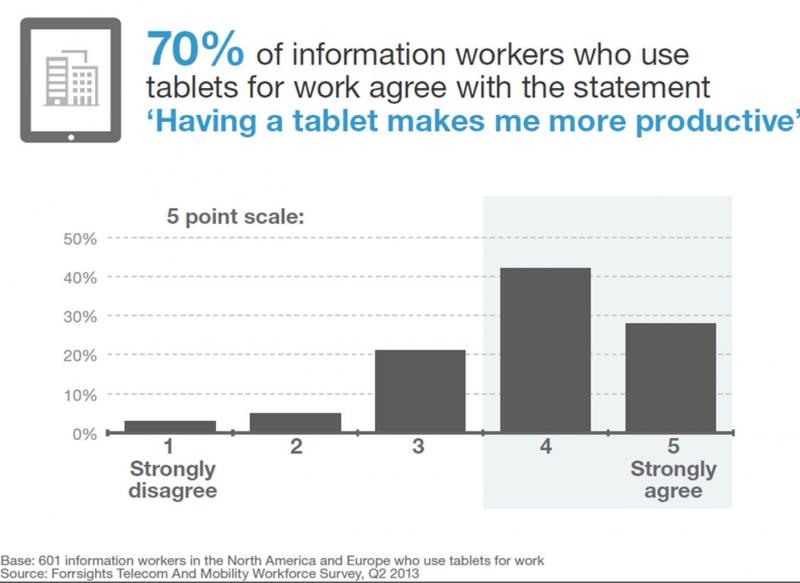With Windows RT Struggling, Microsoft Should Bring Office To iPad
One noteworthy detail emerged from Microsoft’s quarterly earnings call yesterday: A $900 million write-down for “inventory adjustments” related to the underperformance of Windows RT. This result didn’t come as a surprise because:
- Microsoft’s Windows RT strategy has long been puzzling. Launching the Surface RT device before the Windows 8-based Surface Pro offering never made sense – an insufficient number of Modern UI apps made the Surface RT hard to position and sell from the beginning. Samsung recognized the shortcomings of RT early on, exiting the market a mere three months after RT’s release.
- Microsoft still hasn’t convinced developers that Windows RT should be a top priority. Our survey of 2,038 global software developers revealed that developer support for Windows RT trails Windows 7, Windows 8, Apple iOS, Google Android, and even Apple OS X. For example, while 21% of global developers support or plan to support Windows RT, 64% say the same for “Windows 7 and earlier versions.”
So it seems that the Windows RT value proposition has come down to one asset: Microsoft Office. Microsoft has invested in an upgrade to Outlook for Windows RT, offering a much more complete user experience than at launch.
But the biggest asset Windows RT has is actually based on an app that Microsoft hasn’t released – Office for Apple’s iPad. While Office came to the iPhone (for Office 365 subscribers) in June, a comprehensive, touch first, iPad-specific Office offering is missing (aside from OneNote). It’s easy to infer that the absence of Office for iPad has more to do with propping up Microsoft’s hopes for Windows RT than with any lack of development resources at Microsoft. Indeed, the recent reorg at Microsoft revealed a new priority from CEO Steve Ballmer: “One Microsoft, all the time.” Presumably this means cross-promotion of offerings like Windows RT and Office.
Yet there is a hidden danger of holding out on Office for iPad and Android tablets – competitors tend to fill the gap and users establish different habits. Over 3 years into its market life, Apple’s iPad has sold over 140 million devices, and sales continue to grow year over year. Android tablets have finally taken off, with 25% of information workers in the US and EU who report using a tablet for work saying it’s an Android device.
Microsoft’s problem: Workers and consumers are already exceptionally productive with their tablets. We asked information workers with tablets – 86% of whom own an iPad, an Android tablet, or a forked Android tablet – whether they agree with the statement “having a tablet makes me more productive.” The result? Some 70% agreed with a rating of 4 or 5 on a 5-point scale. Again, this is a largely iPad- and Android tablet crowd… and they’re already finding tablets productive without Microsoft Office.

By ceding ground to competing apps, Microsoft is encouraging users to investigate other platforms. For workers and consumers, Apple’s iWork and QuickOffice Pro HD (now owned by Google) offer strong functionality with touch-first user interfaces. (Some people are even writing novels on iPads). More specialized programs like Evernote and Slideshark fill the niches for composition/note-taking and slide presentations respectively. Meanwhile, enterprises create new custom iOS and Android apps to accomplish business-specific productivity tasks.
The bottom line is that “protecting” Windows RT by keeping Office off of Apple’s iPad and Android tablets isn’t working. It’s instead creating risk for Office as users find other ways of getting things done. If 10% of the 140 million iPad owners bought Office for $99.99, Microsoft would earn $1.4 billion in topline revenue – or $500 million more than the Windows RT write-down last quarter.
J. P. Gownder is a vice president and principal analyst at Forrester Research serving Infrastructure & Operations Professionals. Follow him on Twitter at @jgownder.
